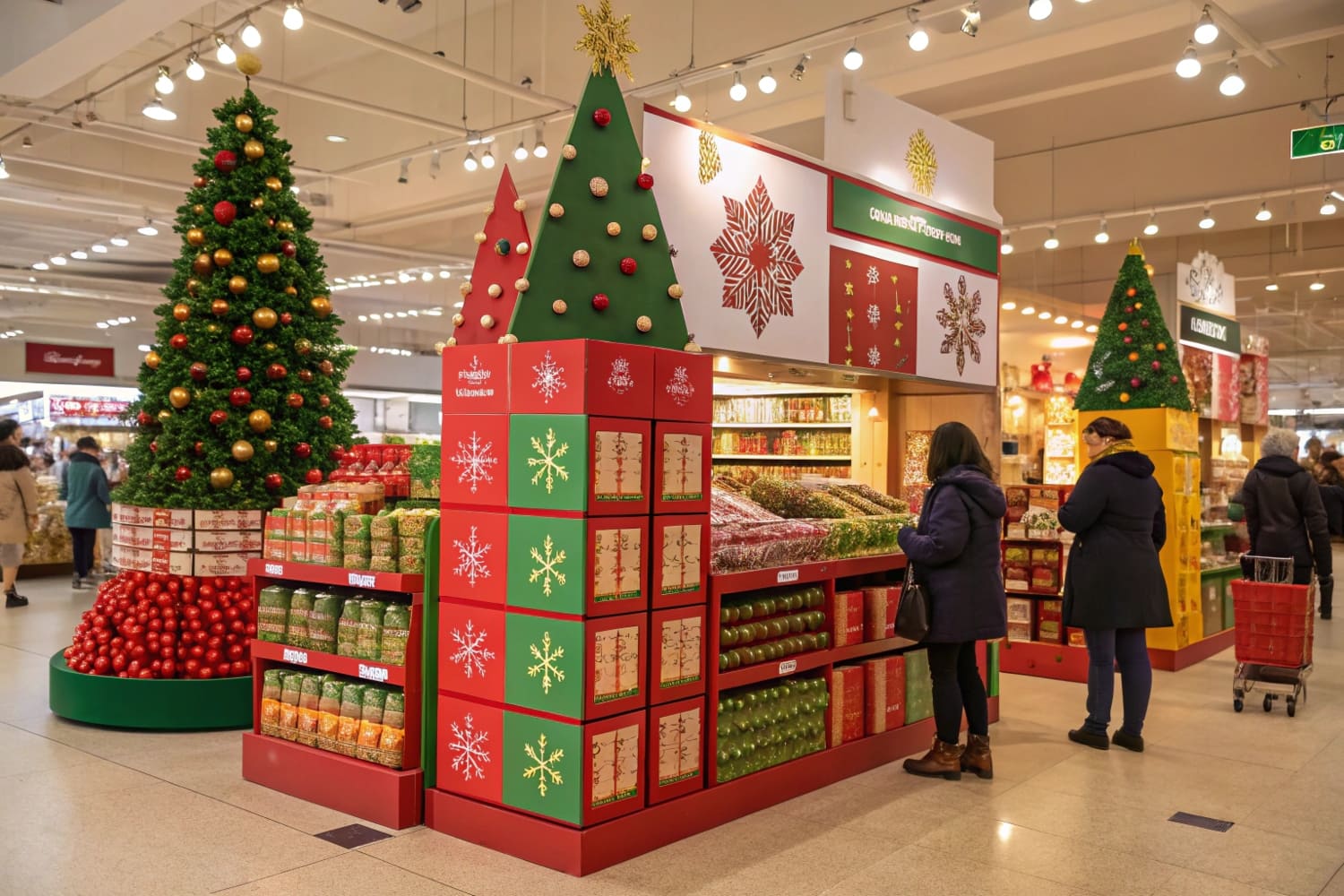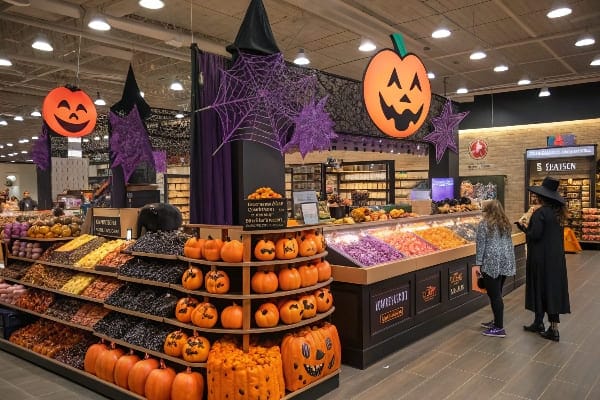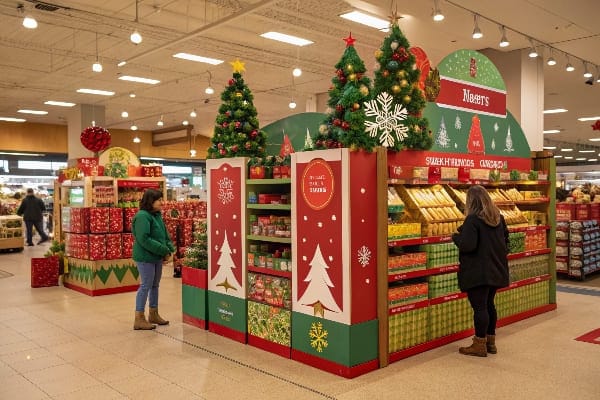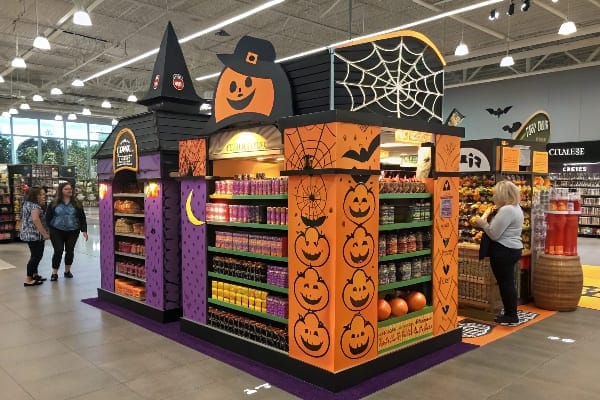What Are Seasonal Displays?

Seasonal displays are a powerful marketing tool. They capture attention, reflect the time of year, and trigger specific emotions tied to holidays or seasonal changes. In this article, we’ll dive deep into understanding seasonal displays and how they can elevate your business.
Seasonal displays are temporary setups that align with specific times of the year. They are designed to highlight products or services relevant to a particular season, making them stand out to customers.

As seasons change, so do consumer preferences. By tapping into seasonal trends, businesses can create more impactful visual experiences for customers. Let’s explore what makes these displays so effective in boosting retail sales.
What is Seasonal Display?
Seasonal displays are more than just decorative setups. They serve as a strategic marketing tool to drive sales, attract attention, and build brand identity.
A seasonal display is an eye-catching setup that changes according to the season. It promotes products related to specific times of the year, such as Christmas, summer, or back-to-school seasons.

Seasonal displays are an effective way to communicate timely messages to customers. They leverage the changing moods and needs of shoppers during different seasons. For instance, a store might showcase outdoor furniture in spring or gift items during the holiday season. These displays create a sense of urgency and relevance, motivating customers to make purchases.
In retail, visual merchandising1 plays a key role in driving these seasonal displays2. Let’s take a closer look at what seasonal visual merchandising3 involves.
What is Seasonal Visual Merchandising?
Seasonal visual merchandising is the art of designing and arranging displays in a way that resonates with the current season’s themes, colors, and events.
Seasonal visual merchandising refers to the strategic arrangement and design of retail displays to reflect seasonal changes. It uses elements like color schemes, lighting, and props to enhance the shopping experience.

A well-executed seasonal visual merchandising4 strategy taps into customers’ seasonal expectations and desires. For example, spring visuals might incorporate pastels and floral designs, while fall could use warm tones and rustic elements. This type of merchandising is all about creating a connection with customers, making them feel the season and encouraging them to purchase items they might not have considered otherwise.
Effective seasonal visual merchandising doesn’t just rely on aesthetics; it considers customer psychology5 and shopping habits6. Let’s explore how seasonal merchandise ties into this approach.
What is Seasonal Merchandise?
Seasonal merchandise refers to products that are particularly relevant during certain times of the year. These items typically align with the needs, preferences, and celebrations of each season.
Seasonal merchandise includes products that are in demand during a specific time of the year, such as Halloween costumes, summer apparel, or winter accessories.

The key to seasonal merchandise7 is its timely relevance. When a retailer stocks seasonal items like swimsuits during summer or jackets in winter, they’re capitalizing on seasonal demand. Retailers can significantly increase sales by curating a collection of items that customers need for a limited time, making it easier for shoppers to make purchases without thinking twice.
Merchandising strategies for seasonal products often require quick turnover and high visibility. As trends change seasonally, businesses must adapt to avoid being stuck with outdated merchandise. Now, let’s dive into understanding how seasonal patterns in business8 play a vital role in shaping these strategies.
What Are Seasonal Patterns in Business?
Seasonal patterns in business refer to the recurring fluctuations in demand that happen at specific times throughout the year. These patterns are predictable and linked to holidays, weather changes, and cultural events.
Seasonal patterns in business are predictable trends in consumer demand that occur during certain times of the year, such as peak sales during the holiday season or a dip in demand during off-peak months.

Understanding these patterns is crucial for businesses, as it allows them to plan inventory, staffing, and marketing efforts accordingly. Retailers often experience surges in demand9 during key seasons, such as the holiday shopping period or back-to-school months. Knowing when these peaks and troughs will occur helps businesses prepare their supply chains and optimize sales strategies10.
Moreover, it’s important to anticipate the end of the season. For instance, after the summer season ends, businesses might offer discounts to clear out remaining stock of seasonal merchandise. By tracking these patterns, companies can maximize their profitability year-round.
Conclusion
Seasonal displays, visual merchandising, and understanding seasonal patterns can provide a substantial boost to your retail strategy. When done right, these tactics connect with customers on an emotional level, driving sales and enhancing brand loyalty.
Learn about the crucial role visual merchandising plays in attracting customers and increasing sales effectiveness. ↩
Explore how seasonal displays can enhance customer engagement and boost sales in retail environments. ↩
Discover innovative strategies for seasonal visual merchandising that can elevate your retail space and attract more customers. ↩
Discover effective strategies and insights on seasonal visual merchandising to enhance your retail approach and connect with customers. ↩
Understanding customer psychology can significantly improve your marketing strategies and boost sales by aligning with consumer behavior. ↩
Stay updated on shopping habits trends to tailor your merchandising strategies and meet customer expectations effectively. ↩
Explore this link to learn effective strategies for optimizing seasonal merchandise and boosting sales during peak times. ↩
Understanding seasonal patterns can enhance your business strategy, ensuring you meet customer demand effectively throughout the year. ↩
Understanding the factors behind demand surges can help businesses strategize effectively and boost sales. ↩
Exploring effective sales strategies can enhance profitability and ensure businesses are prepared for seasonal fluctuations. ↩



